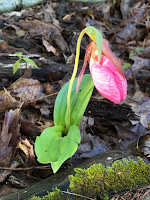Kicked off the field season with bird surveys
- SGL40 - site near Francis Walter Dam, Turned 51
- Burn sites and reference sites
- Least flycatchers were back - must have social breeding. Breeding site in the burned area - I suspect they don't care as long as the mid-story and canopy are intact. Lots of Veery in the unburned site.
Wednesday (5/27/2020)
- SGL292 - site near Laurel Run, PA
- found sites that were burned last year I didn't get to. Lots of hiking. There is a creek on a north facing slope that has huge hemlocks and very awe inspiring.
Thursday (5/28/2020)
- Took the day off for personal reasons
Friday (5/29/2020)
- SGL207 part 1 - site near Mountain Top, PA
- I assumed this site was smaller but after looking at maps this site is huge but today I just surveyed sites I did last year including sites that were burned in 2018 and reference sites. Heard one wood thrush pair although there were at least 5 pairs last year
Saturday (5/30/2020)
- SGL207 - surveyed six points - 3 points that were burned
- Walking to new sites heard a few Wood Thrush I didn't hear the day before.
- Probably the second hardest day in the field in three years. The new sites were at least a km from the car and then several hundred meters apart. The slopes were steep and undulating. I wonder if there was copper mining at this in the past (at least 100 years ago). Huge granite boulders and slabs created lots of smaller cliff faces and caves. Shocked I didn't see bears or a rattlesnake. Did find a small patch of pink lady's slipper. The big problem of the day were the gnats.
Sunday (5/31/2020)
- SGL13 - surveys 4 points that will be burned this year (at least scheduled to). Super dense blueberry bushes and swamp. Also, a branch swung up my nose and I gushed blood for a few minutes. Did see a huge (maybe 400 pounds) bear cross the road and head to where I surveying. Awesome.



























